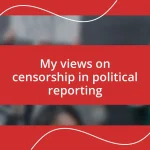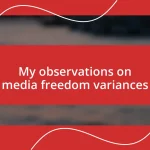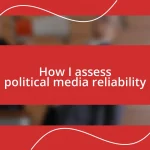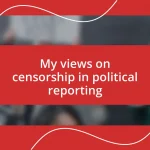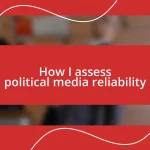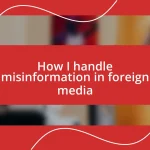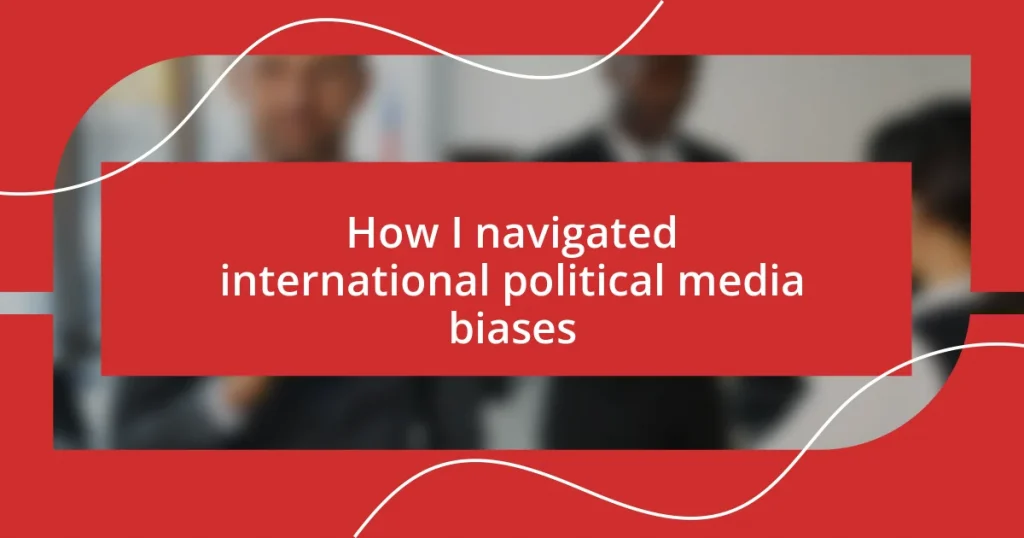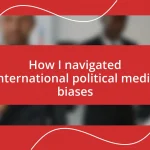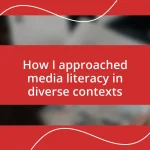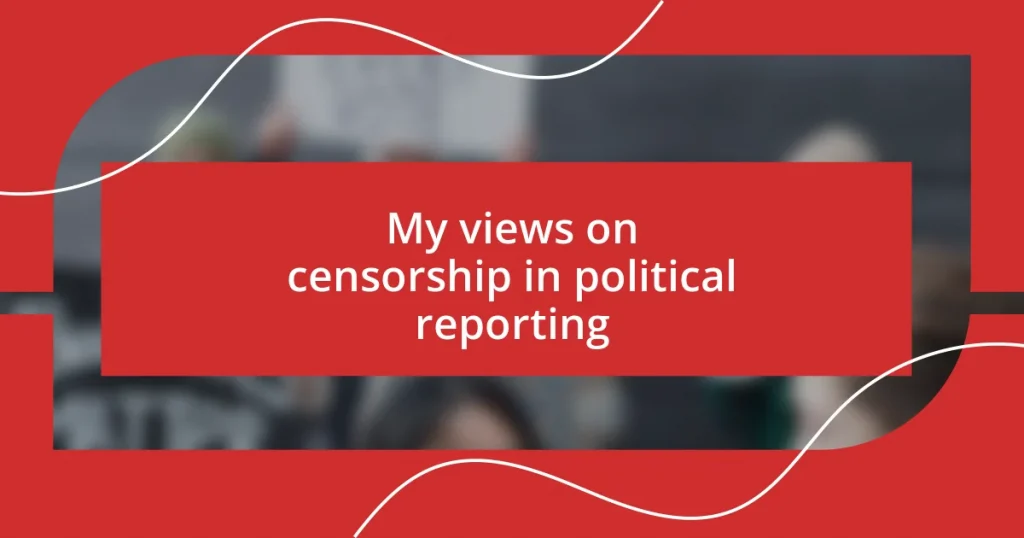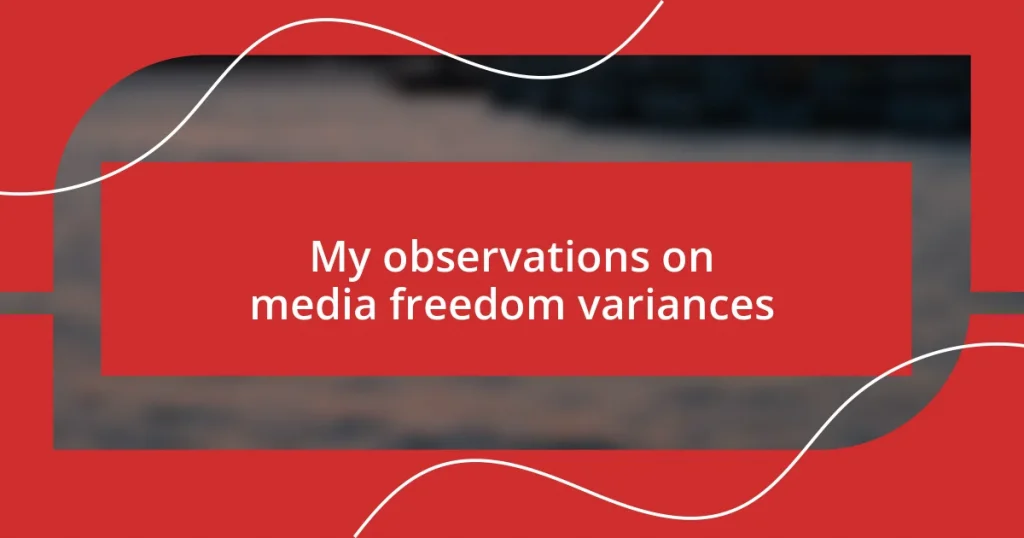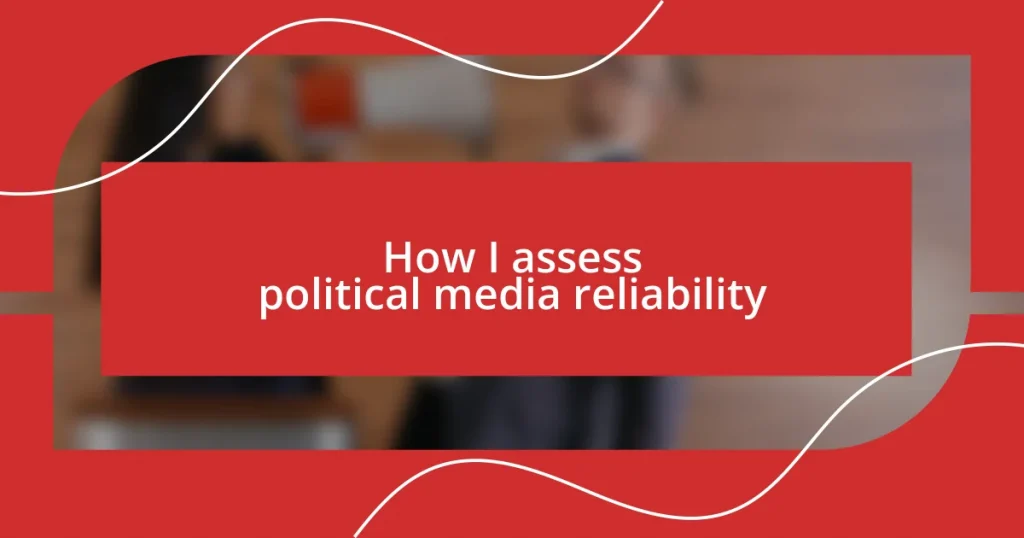Key takeaways:
- Recognizing and questioning media biases enhances understanding and improves critical consumption of news, allowing readers to separate facts from emotional appeals.
- Engaging with diverse perspectives fosters empathy and broadens worldview, encouraging individuals to confront their own biases and challenge prevailing narratives.
- Utilizing tools like Media Bias/Fact Check and Snopes aids in verifying information, reinforcing the importance of responsible sharing and awareness of media accuracy.
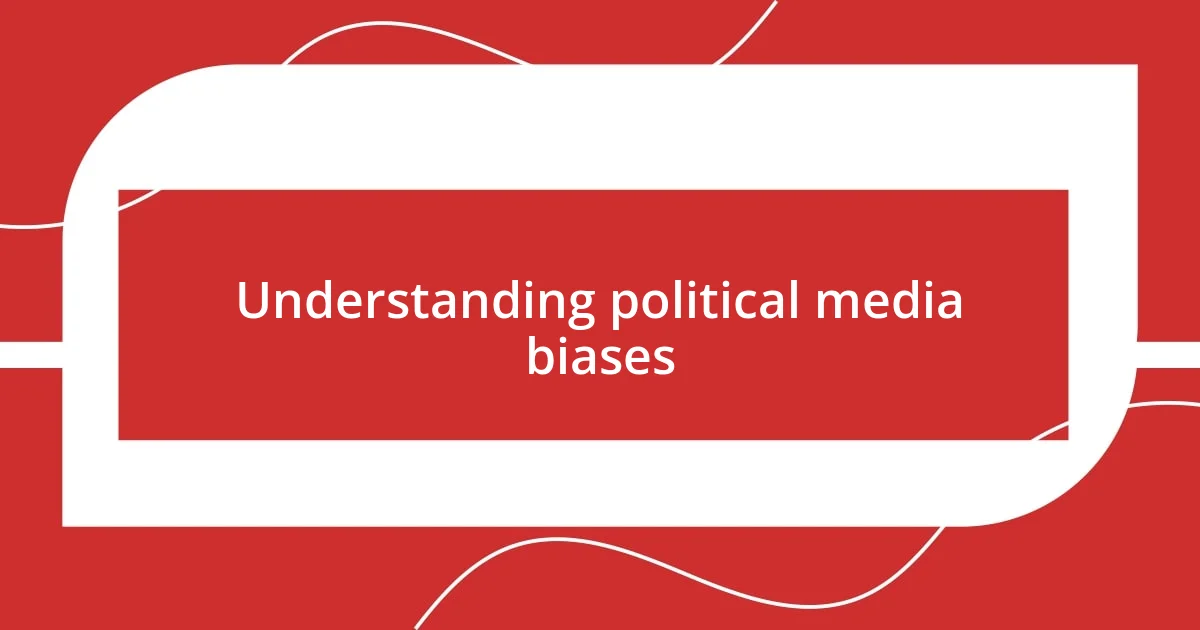
Understanding political media biases
Understanding political media biases is essential for anyone trying to navigate today’s information landscape. For instance, I remember the first time I encountered stark differences in news coverage during an election. It struck me how certain outlets framed the same event in contrasting lights—raising questions about credibility and trust. Why do we accept one narrative over another?
I often reflect on my own experiences when interacting with diverse media sources. I’ve found that recognizing biases helps filter the noise. It’s like tuning into an old radio; sometimes you have to adjust the dial to find a clearer signal. When I take a step back, I ask myself, “What’s the underlying motivation of this media outlet?” This perspective has helped me understand not just what is being reported but how and why it’s being presented in a certain light.
Another interesting aspect I’ve observed is how emotional appeals can often overshadow factual reporting. During high-stakes political events, sensational headlines can provoke strong reactions, making us feel a certain way before we even dig into the details. I often caution myself to pause and reflect: “Am I reacting to the information, or am I being led by emotion?” This self-awareness has improved my media consumption habits, making me a more discerning reader while fostering a deeper understanding of the political narratives at play.
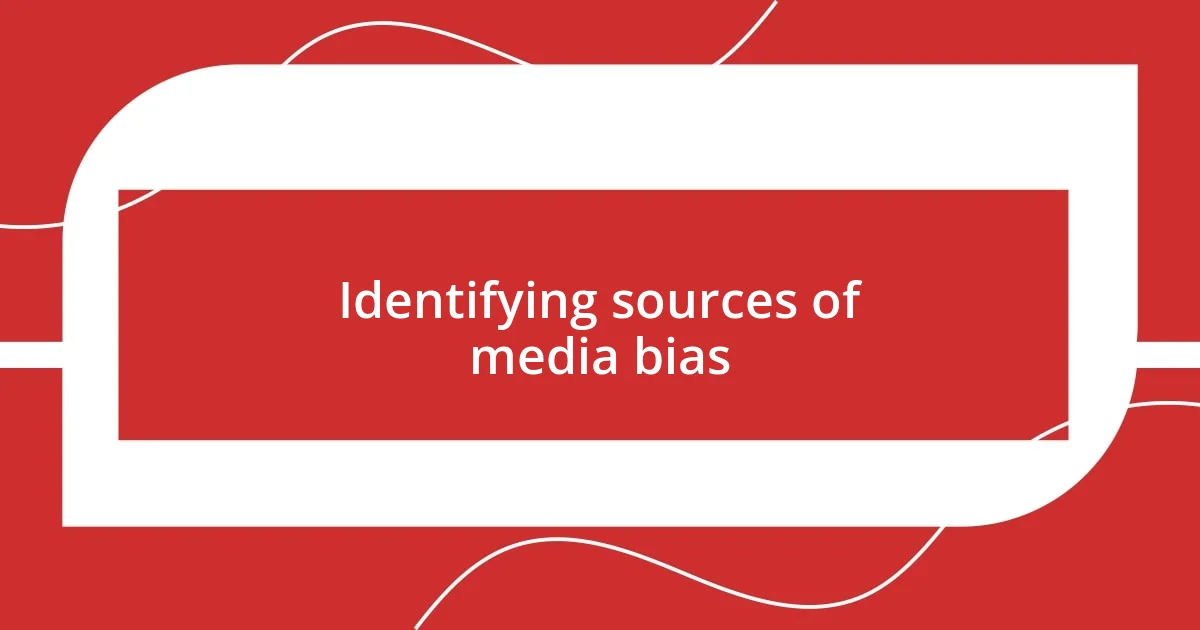
Identifying sources of media bias
Identifying sources of media bias can feel overwhelming, but it’s essential to break it down. I once stumbled upon a news article that seemed overly sympathetic to one political figure. It made me curious: what could possibly lead to such a skewed portrayal? By analyzing the language, sourcing, and even the images used, I discovered it was aimed at evoking a particular emotional response rather than providing a balanced view. This experience taught me how crucial it is to scrutinize not just the news, but the motivations behind it.
As I delved deeper into different media outlets, I realized that the ownership and funding sources can heavily influence the angle of coverage. For instance, I encountered a station funded by a particular lobbying group, leading to support for specific policies. Whenever I watch a news segment now, I consider, “Who stands to benefit from this narrative?” This constant questioning allows me to separate facts from slanted perspectives, making for more well-rounded discussions about the issues that matter.
A practical tool I’ve adopted is to cross-reference information with multiple sources. There was a time when I only relied on one outlet for my news. However, one day I came across a story that diverged dramatically across platforms, and it made me rethink my approach. Now, I find it invaluable to compare reports. By observing how various outlets cover the same event, I glean a more comprehensive understanding. This method not only deepens my insights but has also elevated my trust in the information I choose to consume.
| Source of Bias | Description |
|---|---|
| Ownership | Media outlets owned by corporations or political figures may have vested interests impacting their coverage. |
| Funding | News organizations funded by lobbying groups may slant stories to favor particular policies. |
| Language and Tone | The choice of words and emotional tone can signal bias by framing issues in a divisive manner. |
| Source Selection | Focusing on selective quotes or testimonials can skew the reader’s perception of an event. |
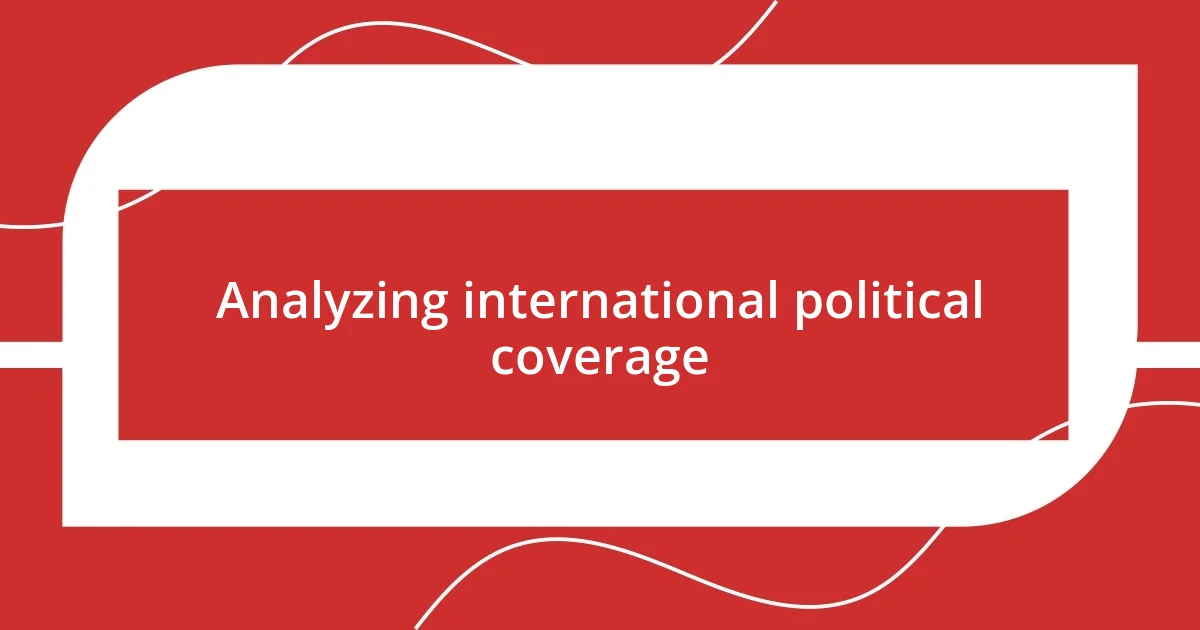
Analyzing international political coverage
Analyzing how international politics is covered can feel like peeling an onion—there are layers upon layers of perspectives and angles. Each time I read reports from different countries, I’m often struck by how local contexts shape narratives. For example, while one country might highlight a diplomatic breakthrough, another may focus on the fallout from a controversial policy. This contrasting coverage is not just about differing opinions; it reveals underlying national interests that can shape public perception and policy discussions.
When diving deeper into this analysis, I find these aspects particularly insightful:
- Cultural Context: The history and societal values of a nation can significantly influence how political events are portrayed. For instance, coverage of protests in different countries often reflects whether those actions are seen as justified or misguided based on national narratives.
- Language Nuance: The choice of words can change the perception of events. A term like “military intervention” can elicit starkly different emotional responses depending on the country’s political climate.
- Audience Targeting: Media outlets cater their content to resonate with specific audiences. I’ve noticed this when reading foreign news outlets that frame stories to elicit patriotic sentiments among their viewers.
- Temporal Focus: Coverage can emphasize certain time periods, glossing over other incidents that provide critical context. Understanding the timeline of events is crucial for grasping the full picture.
I remember reading a news article from a South American outlet that framed a foreign leader’s visit as a tremendous success, showcasing smiling faces and warm handshakes. Meanwhile, a European report focused on the protests occurring simultaneously, capturing the discontent swirling beneath the surface. This made me reflect on how a story could lie on both sides of the spectrum, depending on where it’s being reported. It serves as a reminder to continually question the narrative and seek a broader understanding of the political landscape.
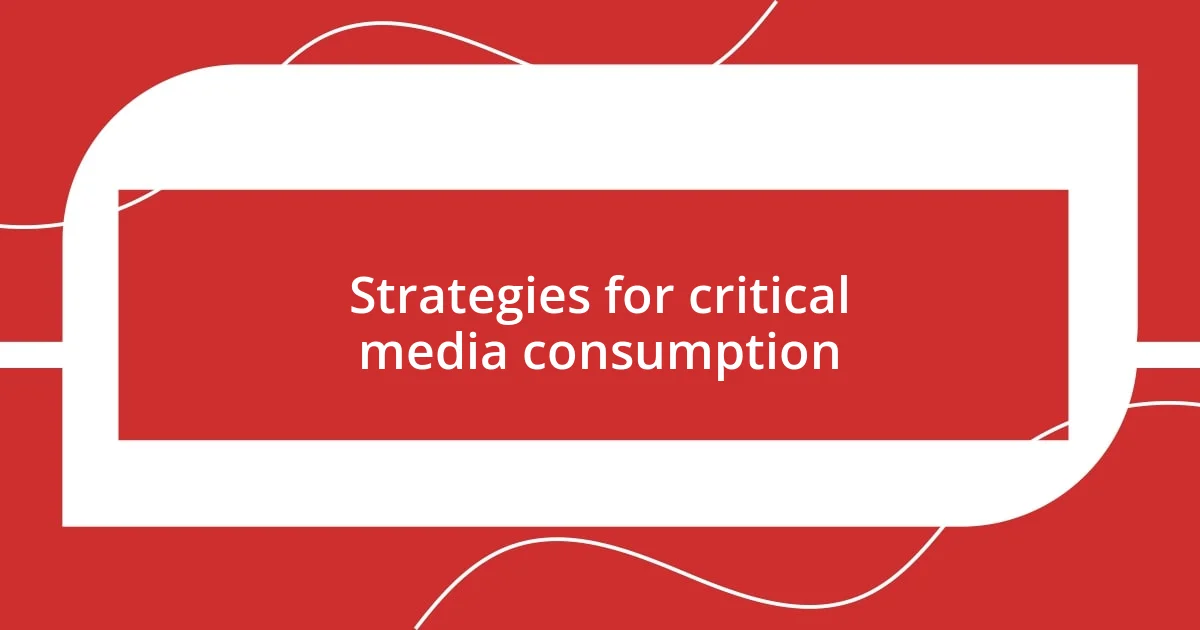
Strategies for critical media consumption
One effective strategy for critical media consumption is to cultivate a habit of questioning. Each time I come across a headline that grabs my attention, I pause and ask myself, “What’s the angle here?” Recently, I read a tweet that sensationalized a political event. Instead of taking it at face value, I dug deeper into the reporting. This simple act of curiosity led me to uncover key details omitted from the original post, emphasizing why it’s so vital to challenge surface narratives and seek the full story behind controversial topics.
I’ve also found that engaging with diverse viewpoints enriches my perspective. For instance, joining discussions on platforms where people from different backgrounds share their insights has proven invaluable. On one occasion, I joined a panel on global politics, and hearing voices from around the world transformed my understanding of a seemingly straightforward issue. It struck me how easily my own biases could cloud the nuances of complex discussions. For anyone looking to enhance their media consumption, connecting with a variety of opinions can be eye-opening and foster really insightful debates.
Another practical approach is to take notes while consuming media. I started jotting down key points and my thoughts as I read articles or watch segments. This practice allows me to process the information actively rather than passively absorbing it. The first time I did this with a controversial documentary, I was surprised at how much more critically I could engage with the material. It’s a simple tactic, but writing down my reflections helps solidify my understanding and encourages me to dig further into topics that spark my interest or confusion. Wouldn’t it make sense if we all paused to reflect rather than scrolling mindlessly?
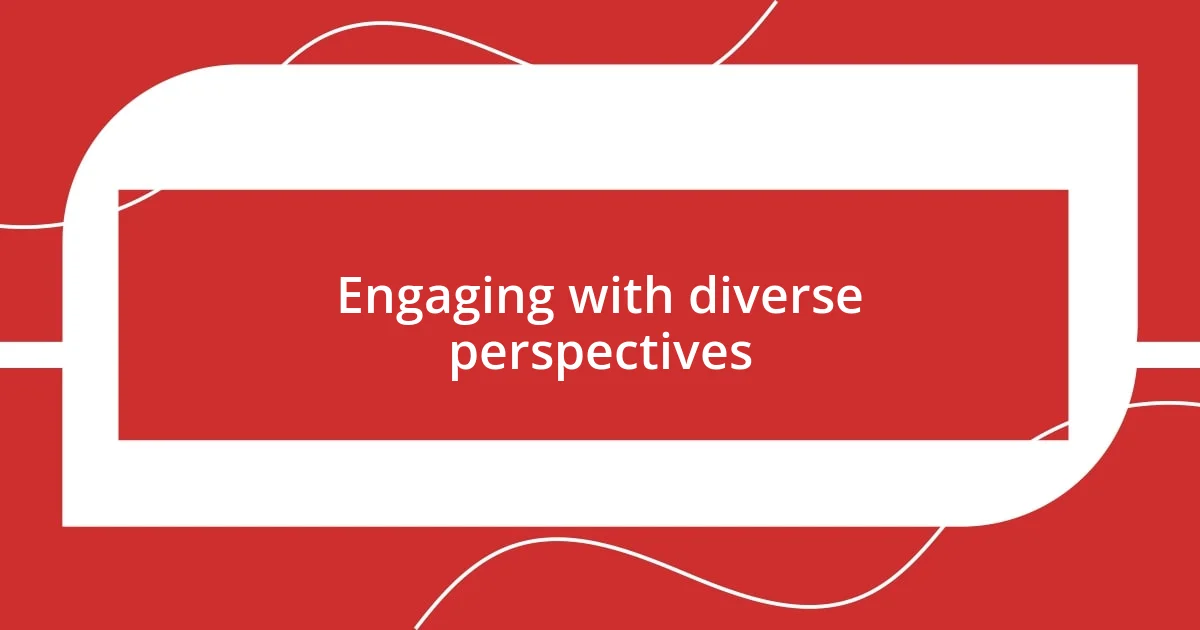
Engaging with diverse perspectives
Engaging with diverse perspectives has always been a journey for me, one that’s vibrant and often challenging. I vividly recall attending a community event where people discussed their interpretations of recent global happenings. Listening to voices from different cultural backgrounds opened my eyes to how personal experiences shape opinions. I found myself questioning my own beliefs and recognizing the value of narratives that I had never considered before. Isn’t it fascinating how a single event can be viewed through so many different lenses?
Through those discussions, I learned that embracing variety not only broadens understanding but also fosters empathy. I remember a particular exchange with someone who had grown up in a conflict-ridden region. Their story about the daily realities of life during unrest was a stark contrast to the sanitized news reports I was accustomed to. How often do we overlook the human stories behind the headlines? It’s this engagement with others’ realities that transforms passive consumption into meaningful dialogue.
I often contemplate my own biases and the filters through which I view the world. It’s easy to stay within a comfortable bubble, absorbing only the viewpoints that reinforce what I already believe. I challenge myself to seek out differing opinions, whether in articles, podcasts, or discussions. Recently, I stumbled upon a debate that showcased polar opposite views on climate change policy. Instead of dismissing the opposing perspective, I found myself intrigued, learning more about the underlying concerns that shaped such stances. Isn’t it enriching when we allow ourselves to be challenged? Engaging with a spectrum of thoughts not only enhances our knowledge but can also lead to more informed and compassionate viewpoints.
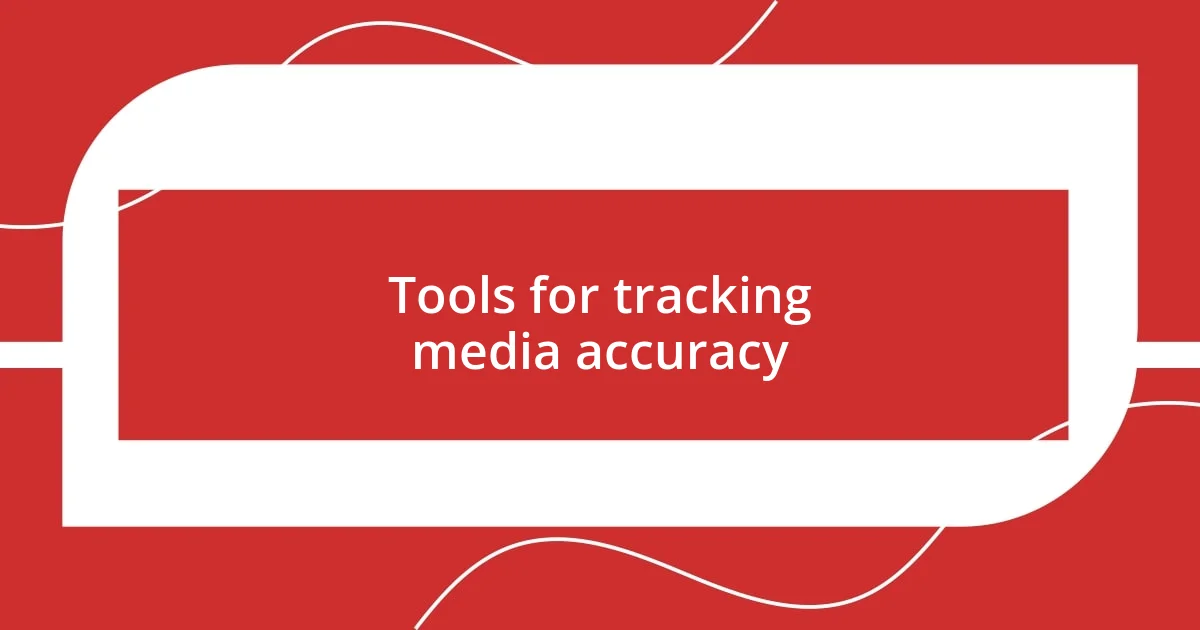
Tools for tracking media accuracy
One of the best tools I’ve discovered for tracking media accuracy is the website Media Bias/Fact Check. When I first stumbled upon it, I was amazed by how thoroughly it rated news sources on their bias and factual reporting. The ease of access to their database really appealed to me. I remember checking a source I often visited, only to find it ranked as “leaning left” with a reputation for sensationalism. It made me reconsider my reading habits. Have you ever realized how the sources we trust can genuinely shape our perspectives?
Another invaluable resource is Snopes, which helps in verifying claims and debunking misinformation. I can still recall a moment during an election season when an alarming story circulated about a candidate’s supposed misdeed. Instead of sharing it right away, I took a moment to search for it on Snopes. To my relief, I discovered it was untrue. That experience reinforced my belief in responsible sharing and the importance of fact-checking. Isn’t it reassuring to know that there are dedicated platforms aimed at keeping us informed?
Lastly, I’ve found that using social media analytics tools can give insights into trending topics and the narratives surrounding them. Programs like CrowdTangle allow users to see how stories are shared across different platforms. One night, while following a viral tweet about international relations, I noticed a pattern in how various outlets framed the event. This exposure helped me identify biases in narrative construction, making me wonder how many stories are influenced solely by engagement metrics rather than truthful reporting. Have you ever taken the time to analyze the stories behind the stories?
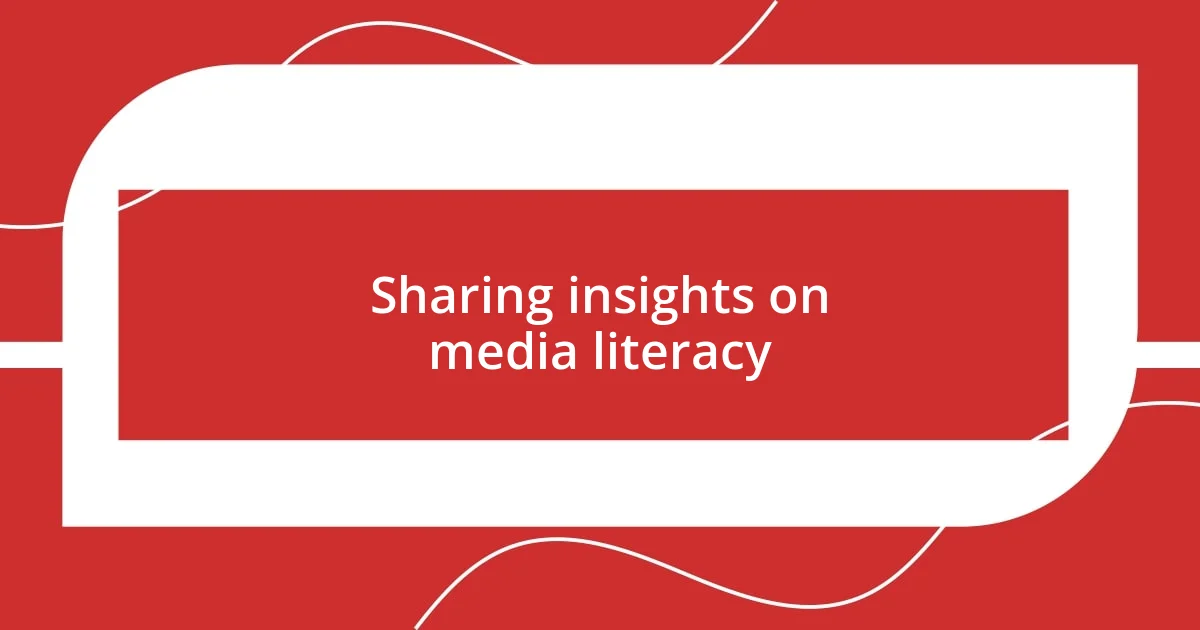
Sharing insights on media literacy

Sharing insights on media literacy
Media literacy has become essential in our digital age, and I often reflect on my own experiences navigating this vast landscape of information. I vividly remember attending a workshop on media literacy, where I learned to critically analyze sources. During one engaging session, we dissected a news article together, unraveling its biases and the underlying motives behind its publication. It’s incredible how we can unravel the threads of a story just by asking the right questions—have you ever thought about what drives the narratives we consume?
Another powerful lesson in media literacy came when I decided to follow news from multiple countries. I recall my shock when I compared how different outlets reported on the same international conflict. The discrepancies were striking! One country’s report focused on humanitarian efforts, while another emphasized military actions. This experience made me wonder how often the perspective of a prevailing narrative shapes the understanding of an issue. I realized that recognizing these differences is crucial to forming a well-rounded opinion. Isn’t it fascinating how location can influence media portrayal?
In my journey toward understanding media literacy, I’ve often found that asking questions is as powerful as seeking answers. I’ve developed a habit of questioning the headlines that grab my attention—what’s the story behind them? Recently, I clicked on a sensational article about a political scandal. Before diving in, I took a moment to research the publication and its track record. Upon discovering a history of exaggerations, I opted to look for more credible sources instead. This simple practice keeps me on my toes and encourages me to dig deeper. Have you considered what lies beneath the surface of the articles you read? Engaging critically with media transforms passive consumption into active learning.
